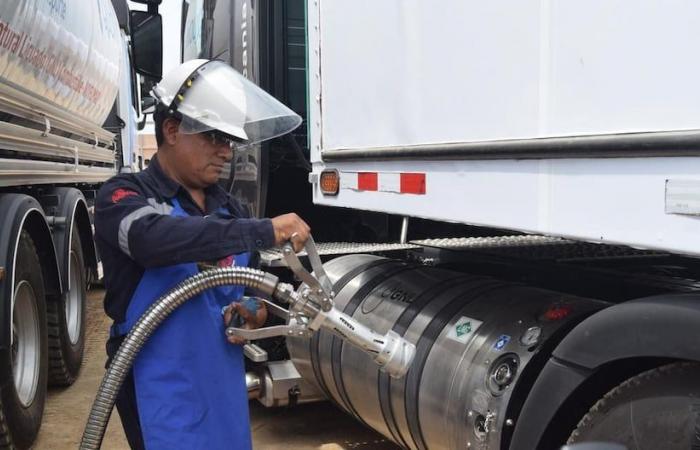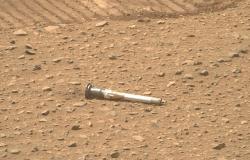What is behind the rebranding of Limagas?
We are aiming to redefine the purpose to contribute to the development of a more environmentally friendly energy matrix and channel all our business lines. It is a commitment of our group to the energy transition of Peru.
What will be the most immediate changes?
This week we are going to launch a new image for both Limagas and the subsidiaries in Peru and the recently launched EVA, focused on the development of natural gas in heavy cargo transportation. Our strategy for the next three years is very strong in the natural gas business. Peru has a tremendous opportunity to massify environmentally friendly energies, not only natural gas, but also use those that are more efficient in certain places. Natural gas and LPG (liquefied petroleum gas) are complementary and environmentally friendly transition energies.
So, will natural gas be the protagonist?
We look at the business in Peru in a comprehensive manner. Peru is a producer of natural gas and LPG, the most environmentally friendly hydrocarbons, according to the Minam harmfulness index, they are 13, 15 or up to 20 times less polluting than diesel or other petroleum derivatives. We are going to maintain our LPG business, which is very important for us and Peru.
READ ALSO: Lipigas takes control of Limagas Natural Movilidad and announces a network of LNG stations
Is the LPG business stable or growing?
There are two million homes connected to the natural gas network in Peru and around 7 million with LPG. Natural gas has a role and should grow in the coming years; However, our vision of LPG is that it is a market that will maintain volumes, around 2 million tons (per year).
So, are there plans for the LPG business too?
The changes in LPG have to do with our change of identity and our strategy to be sustainable, we are working to complement our LPG and natural gas offer with solar energy to offer hybrid solutions to customers. On the other hand, we have established an internal commitment by 2030 that all the electrical energy consumed by our plants will be generated by renewable energy (solar) to be carbon neutral.
In addition, we started a plan so that all our trucks that move LPG around the country are powered by natural gas, mainly from our company EVA. We also want to market renewable products such as natural biogas by 2030.
How would it be generated?
It is produced with organic waste, our group is already going to inaugurate the first plant in South America in Chile and we are already working in Peru with some clients for the development of a natural biogas plant with a horizon of 2030.
Patricio Mura, general manager of Limagas, in an interview with Gestión.
So, when would the natural biogas plant be ready?
It requires some construction time, permits. Our commitment and goal is that by 2028 this plant could be operational, complementing our offer of traditional natural gas that comes from Shirt.
Meanwhile, could solar energy projects for companies arrive sooner?
We are already working on the implementation of solar energy in our plants and we are already working with a mining company to generate electricity by mixing natural gas with solar energy. That is already a reality.
Is that solution operational?
It is being implemented, to operate at the beginning of 2025.
Are there more clients interested?
Yeah.
How is the expansion of LNG stations for trucks going?
We recently inaugurated a station with our subsidiary Eva (in Mala) and we are going to inaugurate two more stations this year (in Arequipa and Nasca) in the southern Camisea corridor. We were pioneers in bringing natural gas to Pucallpa, Cusco, to a lot of industries, and we will continue to advance in that plan during 2024 and 2025.
Will more LNG stations come?
Our goal is that, between now and the end of the year, the inaugurated Mala station will be complemented by the Nasca and Arequipa stations, which will provide coverage to the south. Next year we should be enabling a station in Cusco and our plan in the next three years is to grow in that segment with more stations in the country.
READ ALSO: Limagas partially offset lower margins from Lipigas’ operations in Chile and Colombia
What is the company’s outlook at the end of 2024?
We should end 2024 as a good year and the next three years we should be investing US$10 million to US$14 million a year, mainly in the natural gas, transportation and industrial businesses. They are our focuses of growth and investment.
How much would they grow this year?
Limagas Perú is comprised of our three subsidiaries Limagas GLP, Limagas Natural and Limagas Eva. We expect to grow (as a group) this year and the next three years at double-digit annual rates.
How many plants operate for LPG and what capacity do they have?
In GLP we have eight plants in the country and a market share of around 15%, we are relevant players in several markets. It is a very important product in the energy matrix of Peru, it has to coexist with natural gas. They are complementary energies. LPG in Peru is going to play an important role, especially in the mountains, jungle and smaller cities, peripheries where geographically it is very complicated and expensive for natural gas to reach.
Do you see new businesses in Peru?
It is possible to go faster but there has to be a union between the public and the private, and thus we have had great examples with the Camisea consortium. We are looking at the Seven Regions project (distribution of natural gas in southern regions) and eventually we could participate in a tender. However, the company’s focuses are more oriented to the industrial segment with LNG and the tremendous opportunity to replace diesel in the vehicle and heavy-duty segment.
What industrial segments do you serve?
The agricultural sector, and we have an important focus on transportation in mining, there is an important opportunity in the south.
READ ALSO: Limagas Natural plans to provide CNG to public transportation in Cusco







